-
 Bitcoin
Bitcoin $79,400.2698
6.03% -
 Ethereum
Ethereum $1,566.1592
8.26% -
 Tether USDt
Tether USDt $0.9997
0.08% -
 XRP
XRP $1.8632
11.47% -
 BNB
BNB $558.0291
5.72% -
 USDC
USDC $1.0000
0.01% -
 Solana
Solana $108.5639
11.71% -
 Dogecoin
Dogecoin $0.1498
13.22% -
 TRON
TRON $0.2342
5.54% -
 Cardano
Cardano $0.5831
12.17% -
 UNUS SED LEO
UNUS SED LEO $8.9733
1.39% -
 Toncoin
Toncoin $3.1025
8.73% -
 Chainlink
Chainlink $11.6078
12.46% -
 Avalanche
Avalanche $17.0526
15.61% -
 Stellar
Stellar $0.2279
11.53% -
 Hedera
Hedera $0.1588
23.88% -
 Shiba Inu
Shiba Inu $0.0...01129
8.20% -
 Sui
Sui $2.0201
14.97% -
 MANTRA
MANTRA $6.2735
5.86% -
 Polkadot
Polkadot $3.6020
7.78% -
 Bitcoin Cash
Bitcoin Cash $276.9731
9.58% -
 Litecoin
Litecoin $71.2785
10.47% -
 Dai
Dai $1.0001
0.02% -
 Ethena USDe
Ethena USDe $0.9989
0.10% -
 Bitget Token
Bitget Token $4.1988
11.99% -
 Hyperliquid
Hyperliquid $11.9726
23.19% -
 Pi
Pi $0.5789
5.72% -
 Monero
Monero $206.9136
9.03% -
 Uniswap
Uniswap $5.1475
9.82% -
 OKB
OKB $52.0149
6.07%
What is an NFT? How does it prove the sole ownership of digital assets?
NFTs, unique digital assets on blockchains like Ethereum, prove sole ownership through token IDs and smart contracts, ensuring verifiable and immutable transaction histories.
Apr 06, 2025 at 05:49 pm
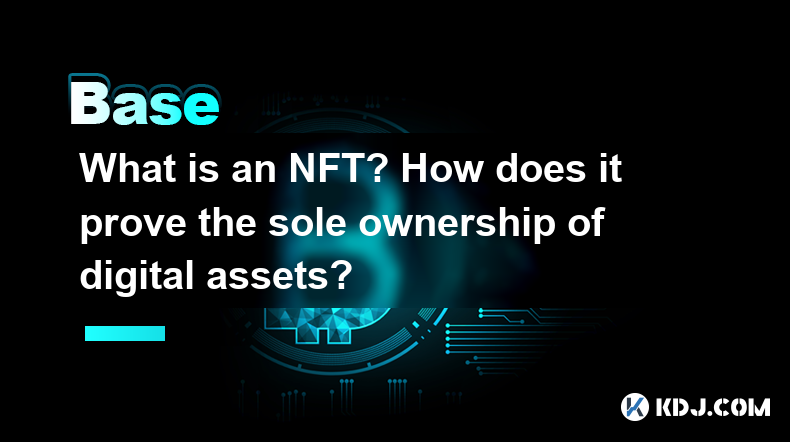
An NFT, or Non-Fungible Token, is a unique digital asset that represents ownership or proof of authenticity of a specific item or piece of content, typically stored on a blockchain. Unlike cryptocurrencies such as Bitcoin or Ethereum, which are fungible and can be exchanged on a one-to-one basis, NFTs are distinct and cannot be exchanged on a like-for-like basis. This uniqueness is what makes NFTs valuable in the digital world, as they can represent anything from art, music, and videos to virtual real estate and in-game items.
NFTs are built on blockchain technology, most commonly the Ethereum blockchain, which provides a secure and transparent way to track ownership and transfer of these digital assets. Each NFT contains metadata that describes the asset it represents, and this metadata is stored in a smart contract on the blockchain. This smart contract ensures that the NFT's ownership and transaction history are publicly verifiable and immutable, meaning they cannot be altered or deleted.
The concept of sole ownership in the context of NFTs is crucial. When you purchase an NFT, you are buying the right to claim ownership of that specific digital asset. This ownership is recorded on the blockchain, making it publicly verifiable and tamper-proof. The blockchain acts as a decentralized ledger that records all transactions related to the NFT, ensuring that only the current owner can transfer or sell the asset.
To understand how NFTs prove sole ownership, it's important to delve into the mechanics of blockchain technology. Each NFT is associated with a unique token ID, which is linked to the asset's metadata. When an NFT is created, or "minted," this token ID is recorded on the blockchain along with the initial owner's address. Any subsequent transfers of the NFT are also recorded on the blockchain, creating a clear and unalterable history of ownership.
The proof of ownership provided by NFTs is further reinforced by the use of cryptographic signatures. When an NFT is transferred, the transaction is signed with the private key of the current owner, ensuring that only the rightful owner can initiate the transfer. This cryptographic security, combined with the transparency of the blockchain, ensures that the ownership of an NFT is indisputable and verifiable by anyone.
How NFTs are Created
Creating an NFT involves several steps, starting with the selection of the digital asset you want to tokenize. This could be a piece of art, a music file, a video, or any other digital content. Once you have chosen your asset, you need to decide on the blockchain platform you will use to mint your NFT. Ethereum is the most popular choice due to its robust infrastructure and widespread adoption.
- Prepare your digital asset: Ensure that your digital asset is in a format that can be uploaded to the blockchain. This might involve converting it to a specific file type or size.
- Choose a platform: Select an NFT marketplace or platform that supports the creation of NFTs. Popular platforms include OpenSea, Rarible, and Mintable.
- Set up a digital wallet: You will need a digital wallet that supports the blockchain you are using. For Ethereum, wallets like MetaMask are commonly used.
- Connect your wallet to the platform: Follow the platform's instructions to connect your digital wallet. This usually involves logging into your wallet and authorizing the connection.
- Upload your asset: Upload your digital asset to the platform, along with any additional metadata you want to include, such as the title, description, and any royalties you wish to set.
- Mint the NFT: Once your asset is uploaded, you can mint the NFT. This process involves paying a gas fee, which is a transaction fee on the Ethereum network. The platform will guide you through the minting process, which typically involves confirming the transaction in your wallet.
- List the NFT for sale: After minting, you can list your NFT for sale on the platform. You can set a fixed price or opt for an auction format.
The Role of Smart Contracts in NFTs
Smart contracts play a pivotal role in the functionality of NFTs. A smart contract is a self-executing contract with the terms of the agreement directly written into code. In the case of NFTs, smart contracts manage the creation, ownership, and transfer of the tokens.
When an NFT is minted, the smart contract records the token ID, the owner's address, and any other relevant metadata. This information is stored on the blockchain, making it publicly accessible and verifiable. The smart contract also includes functions for transferring the NFT, which can only be executed by the current owner.
Smart contracts ensure that the rules governing the NFT are enforced automatically. For example, if you set royalties on your NFT, the smart contract will automatically calculate and distribute these royalties to you whenever the NFT is sold. This automation adds an additional layer of trust and security to the NFT ecosystem.
Verifying Ownership of NFTs
Verifying the ownership of an NFT is straightforward due to the transparency of the blockchain. Anyone can access the blockchain and view the transaction history of an NFT, including its current owner. This transparency ensures that the ownership of an NFT is always verifiable and cannot be disputed.
To verify the ownership of an NFT, you can use a blockchain explorer, which is a tool that allows you to search and view transactions on the blockchain. For Ethereum-based NFTs, you can use explorers like Etherscan. Simply enter the NFT's token ID or the address of the smart contract, and you will be able to see the current owner and the entire transaction history of the NFT.
The Value of NFTs
The value of an NFT is determined by various factors, including its rarity, the reputation of the creator, and the demand from collectors. Unlike traditional assets, the value of an NFT is not solely based on its intrinsic qualities but also on the perceived value within the community.
Rarity is a significant factor in determining the value of an NFT. Some NFTs are part of limited editions, making them more valuable due to their scarcity. Others may have unique features or attributes that set them apart from other NFTs.
The reputation of the creator also plays a crucial role. NFTs created by well-known artists or celebrities often command higher prices due to the perceived value associated with their brand. Additionally, the demand from collectors and investors can drive up the value of an NFT, especially if it becomes part of a popular collection or trend.
NFTs and Digital Rights
While NFTs provide proof of ownership, they do not necessarily confer full copyright or intellectual property rights over the digital asset. When you purchase an NFT, you are buying the right to claim ownership of the token itself, but the underlying digital asset may still be subject to copyright laws.
Digital rights associated with NFTs can vary depending on the terms set by the creator. Some creators may grant the buyer full commercial rights to use the digital asset, while others may retain these rights and only sell the NFT as a collectible. It's important for buyers to understand the specific rights they are acquiring when purchasing an NFT.
Frequently Asked Questions
Q: Can NFTs be replicated or copied?
A: While the digital asset associated with an NFT can be replicated or copied, the NFT itself cannot be duplicated. Each NFT has a unique token ID recorded on the blockchain, ensuring that it remains distinct and verifiable.
Q: How do I know if an NFT is legitimate?
A: To verify the legitimacy of an NFT, you can check its transaction history on the blockchain using a blockchain explorer. Legitimate NFTs will have a clear and verifiable history of ownership and transactions.
Q: Can I sell an NFT that I purchased?
A: Yes, you can sell an NFT that you purchased. Most NFT marketplaces allow you to list your NFT for sale at a fixed price or through an auction. The process typically involves connecting your digital wallet to the platform and following the steps to list your NFT.
Q: What happens if the platform hosting the NFT goes out of business?
A: The ownership of an NFT is recorded on the blockchain, which is independent of any specific platform. If a platform goes out of business, you can still transfer your NFT to another platform or wallet that supports the same blockchain. However, you may lose access to any additional features or services provided by the original platform.
Disclaimer:info@kdj.com
The information provided is not trading advice. kdj.com does not assume any responsibility for any investments made based on the information provided in this article. Cryptocurrencies are highly volatile and it is highly recommended that you invest with caution after thorough research!
If you believe that the content used on this website infringes your copyright, please contact us immediately (info@kdj.com) and we will delete it promptly.
- Dogecoin (DOGE) Witnesses Exciting Surge in Activity This Week as Whales Accumulate Coins
- 2025-04-08 16:20:12
- USDC's stablecoin is making waves as it records a surge in market cap
- 2025-04-08 16:20:12
- The meme coin market just got a jolt from one of the most controversial figures in modern politics, Donald Trump himself.
- 2025-04-08 16:15:12
- Fidelity Joins the Solana ETF Race with New Filing
- 2025-04-08 16:15:12
- Dogecoin (DOGE) Whales Have Been Buying the Dip, Pushing Prices 26% Higher
- 2025-04-08 16:10:12
- Bitcoin Has Reclaimed the $85,500 Level After a Strong Move to the Upside
- 2025-04-08 16:10:12
Related knowledge
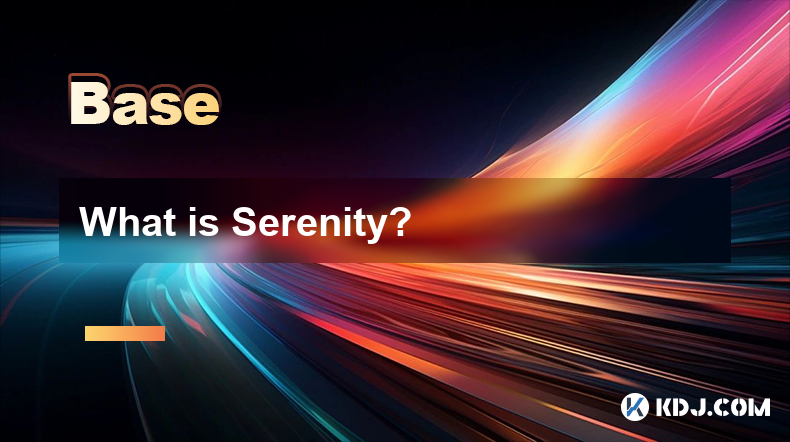
What is Serenity?
Apr 08,2025 at 02:00pm
Serenity, also known as Ethereum 2.0, represents a major upgrade to the Ethereum blockchain. This ambitious project aims to address the scalability, security, and sustainability issues faced by the current Ethereum network. Serenity is not a single update but a series of upgrades that will transform Ethereum into a more efficient and robust platform. Th...

What is Finality Gadget?
Apr 08,2025 at 04:14am
The Finality Gadget is a crucial component in the architecture of certain blockchain networks, particularly those that utilize a hybrid consensus mechanism. It plays a pivotal role in ensuring the finality of transactions, which means that once a transaction is confirmed, it cannot be altered or reversed. This article delves into the intricacies of the ...
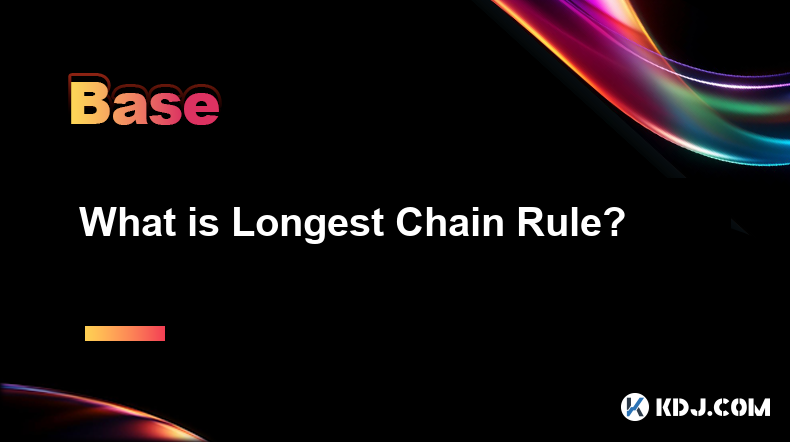
What is Longest Chain Rule?
Apr 08,2025 at 07:50am
The Longest Chain Rule is a fundamental concept in blockchain technology, particularly in the context of cryptocurrencies like Bitcoin. This rule is crucial for maintaining the integrity and security of the blockchain network. In essence, the Longest Chain Rule dictates that the valid blockchain is the one with the most cumulative proof-of-work, which i...
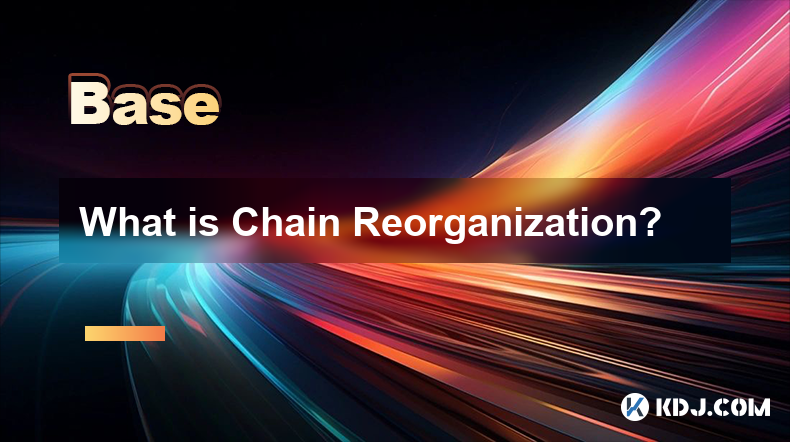
What is Chain Reorganization?
Apr 08,2025 at 03:08pm
What is Chain Reorganization? Chain reorganization, often referred to as a 'reorg,' is a fundamental concept in blockchain technology that can significantly impact the integrity and operation of a blockchain network. Chain reorganization occurs when a blockchain network replaces a previously accepted block or series of blocks with a new set of blocks, l...

What is Orphan Block?
Apr 08,2025 at 05:00am
What is an Orphan Block?In the world of cryptocurrencies, particularly in blockchain technology, the term orphan block is frequently encountered. An orphan block is a block that has been mined and added to the blockchain but is later discarded or replaced by another block. This phenomenon occurs due to the decentralized nature of blockchain networks, wh...
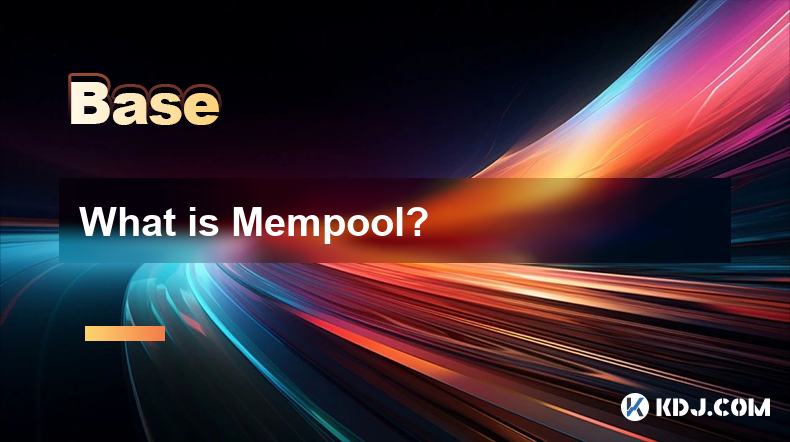
What is Mempool?
Apr 08,2025 at 12:36pm
What is Mempool?In the world of cryptocurrencies, particularly Bitcoin, the term Mempool is frequently mentioned. But what exactly is a Mempool, and why is it important? A Mempool, short for memory pool, is a critical component of the blockchain network that serves as a temporary storage area for unconfirmed transactions. When a user initiates a transac...

What is Serenity?
Apr 08,2025 at 02:00pm
Serenity, also known as Ethereum 2.0, represents a major upgrade to the Ethereum blockchain. This ambitious project aims to address the scalability, security, and sustainability issues faced by the current Ethereum network. Serenity is not a single update but a series of upgrades that will transform Ethereum into a more efficient and robust platform. Th...

What is Finality Gadget?
Apr 08,2025 at 04:14am
The Finality Gadget is a crucial component in the architecture of certain blockchain networks, particularly those that utilize a hybrid consensus mechanism. It plays a pivotal role in ensuring the finality of transactions, which means that once a transaction is confirmed, it cannot be altered or reversed. This article delves into the intricacies of the ...

What is Longest Chain Rule?
Apr 08,2025 at 07:50am
The Longest Chain Rule is a fundamental concept in blockchain technology, particularly in the context of cryptocurrencies like Bitcoin. This rule is crucial for maintaining the integrity and security of the blockchain network. In essence, the Longest Chain Rule dictates that the valid blockchain is the one with the most cumulative proof-of-work, which i...

What is Chain Reorganization?
Apr 08,2025 at 03:08pm
What is Chain Reorganization? Chain reorganization, often referred to as a 'reorg,' is a fundamental concept in blockchain technology that can significantly impact the integrity and operation of a blockchain network. Chain reorganization occurs when a blockchain network replaces a previously accepted block or series of blocks with a new set of blocks, l...

What is Orphan Block?
Apr 08,2025 at 05:00am
What is an Orphan Block?In the world of cryptocurrencies, particularly in blockchain technology, the term orphan block is frequently encountered. An orphan block is a block that has been mined and added to the blockchain but is later discarded or replaced by another block. This phenomenon occurs due to the decentralized nature of blockchain networks, wh...

What is Mempool?
Apr 08,2025 at 12:36pm
What is Mempool?In the world of cryptocurrencies, particularly Bitcoin, the term Mempool is frequently mentioned. But what exactly is a Mempool, and why is it important? A Mempool, short for memory pool, is a critical component of the blockchain network that serves as a temporary storage area for unconfirmed transactions. When a user initiates a transac...
See all articles






















































































